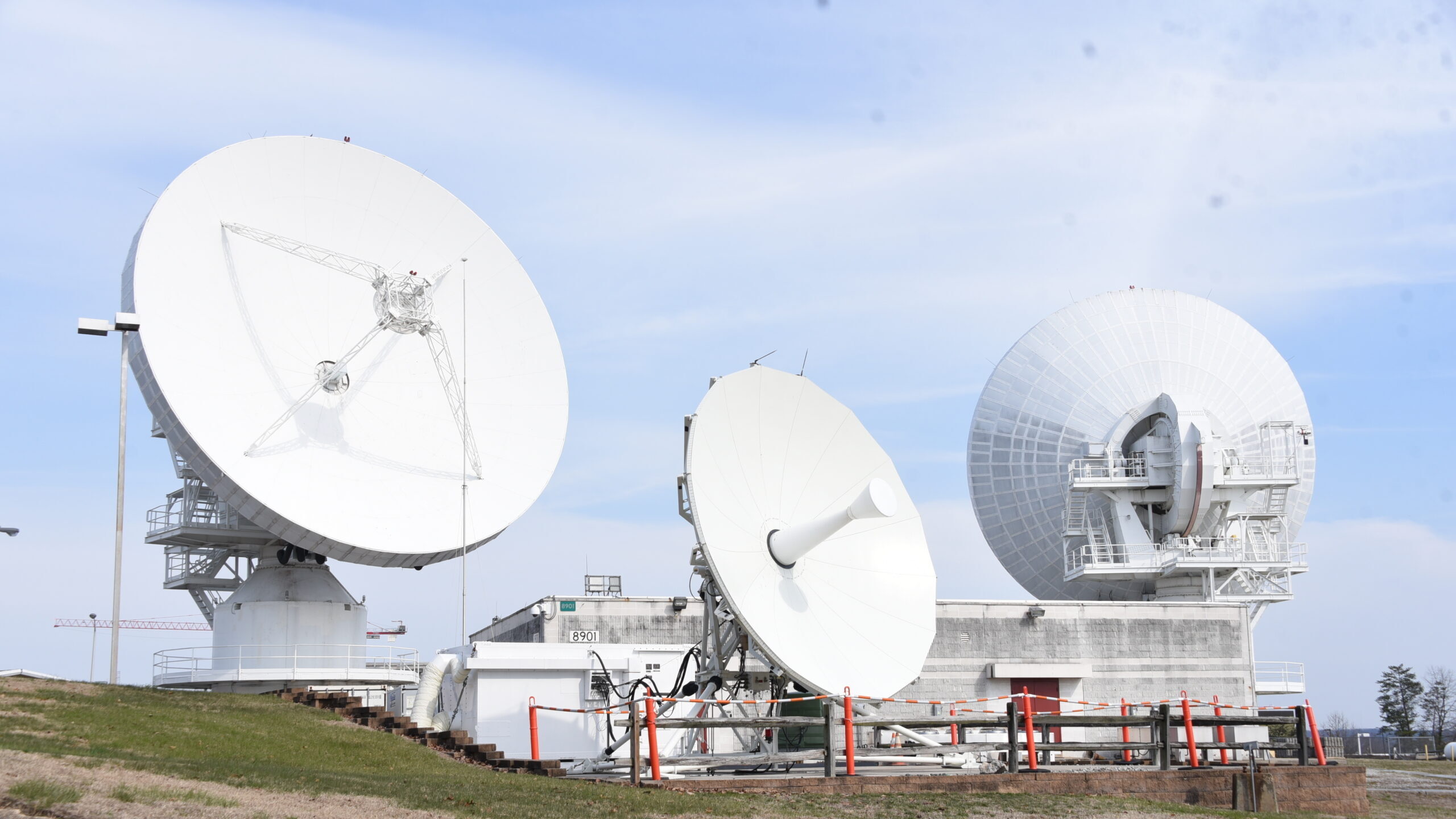
The U.S. Army Satellite Operations Brigade’s Wideband Satellite Communications Operations Centers manage the payloads and provide critical communications, navigation and other space-based capabilities to warfighters. (U.S. Army photo by Carrie David Campbell)
WASHINGTON: As Space Force’s new Space Warfighting Analysis Center works to develop a blueprint for a future military satellite communications macro-network that can underpin Joint All Domain Command and Control (JADC2), planners’ eyes are firmly fixed on both the needs of warfighters and the constraints on their capabilities to actually utilize new capabilities, according to a senior SWAC official.
It is the center’s job to figure out a so-called force design that lays out not only the types of space-based capabilities needed (which orbits, how and when to use radio frequency versus optical satellite comms, etc.), but also how to structure an acquisition program to get them. And the team under David Voss, director of the Spectrum Warfare Center of Excellence at the SWAC, is under pressure to come out with solutions as quickly as possible in order to affect upcoming budget planning cycles, and get new capabilities to the field in the near term.
Asked by Breaking Defense when a final product might be available, Voss quipped, “Not fast enough from what we’ve been told.”
Space Force’s goal is to develop a “hybrid architecture,” one that would see satellites stationed across all orbital domains — Low Earth Orbit (LEO), Medium Earth Orbit (MEO) and Geosynchronous Orbit (GEO) — and include commercial satellites, allowing users to “hop” between them to avoid jamming.
The concept stems from Space Force chief Gen. Jay Raymond’s 2020 Vision for Enterprise Satellite Communications (SATCOM). This would involve mixing small constellations of large, exquisite and expensive military satellites (mostly in GEO) with constellations of smaller, less costly-but-still-bespoke satellites dispersed into LEO and MEO. Creating that architecture, which would include commercial space systems and services, will not be easy, nor cheap.
The questions involved in developing such a force design are incredibly complex, Voss said in a webinar today at the Mitchell Institute.
“As you can imagine, there’s a lot of complexity and in an architecture such as this,” he said, “there’s a lot of what I like to refer to as ‘competing value function analysis.’ There are many great ways to tackle this problem.”
Two key questions are the composition of the on-orbit architecture and how quickly user terminals (i.e. radios) used by soldiers, sailors, airmen and Marines can be either upgraded or replaced — and if the latter, whether that is cost prohibitive in the near term.
Bespoke Satellites Vs. Commercial Options
Voss said that the range of options for how new on-orbit capabilities might be bought is huge, from the Defense Department buying and flying a bunch of their own, new satellites to populate LEO and MEO to provide backup to today’s milsatcom birds largely based in GEO, to Space Force simply buying services from commercial providers.
“Within an acquisition model, there is at kind of one end of the trade space, what happens if the DoD really procured the majority of this hybrid architecture approach? Or what if we had a very robust commercial, multi-orbit space capability that we embrace and we had more of the DoD focus on the protected layer?” he said.
This question of the balance of military and commercial SATCOM has been an issue of debate for years, and up to now, to industry and congressional chagrin, DoD has tended to come down on the side of buying bespoke (i.e. non-commercial) satellites. That is changing as Space Force’s Commercial Satellite Communications Office (CSCO) relooks its strategy, particularly regarding small sats in LEO and MEO, but slowly.
Addressing The Terminal Conundrum
The issue of ensuring that SATCOM terminals, which are developed and bought by the individual services to meet their own needs, with the actual capabilities of satellites built in the past by the Air Force and now by the Space Force, has been a perennial disaster zone. (Just ask anyone involved in the long saga of the encrypted GPS M-Code signal.)
But the SWAC is grabbing that bucking bull by the horns, news that will be music to the ears of the long-suffering Army.
“From a Space Force standpoint, we really want to be very cognizant and aware of the implication of the orbital deployment strategy to the user hardware going forward,” Voss said.
“We’re evaluating the application of the orbital deployments against a variety of user terminal applications is maybe the way to phrase that,” he elaborated. “So, you can envision a handful of implications for users.”
Voss explained that they are looking at how a new on-orbit architecture might accommodate three “categories of user equipment.”
“We’re trying to wrap our heads around what happens if we had user equipment that had the minimal amount of change — you weren’t allowed to touch the hardware?” he said. “What can we do in space to help enable JADC2 concepts for those users where they can’t really upgrade or change their terminals? That’s kind of the first category.”
A second category, he explained, encompasses terminals that have hardware or firmware or even “front-end analog circuitry” that could be upgraded, but is still fundamentally constrained by size and weight factors.
“And then the third category is what happens if we kind of had a clean slate, and we were able to embrace this hybrid terminal construct that is able to roam across LEO or GEO and different service providers — which is definitely… a new terminal procurement with a very large cost implication for our partners within the different services.”






















